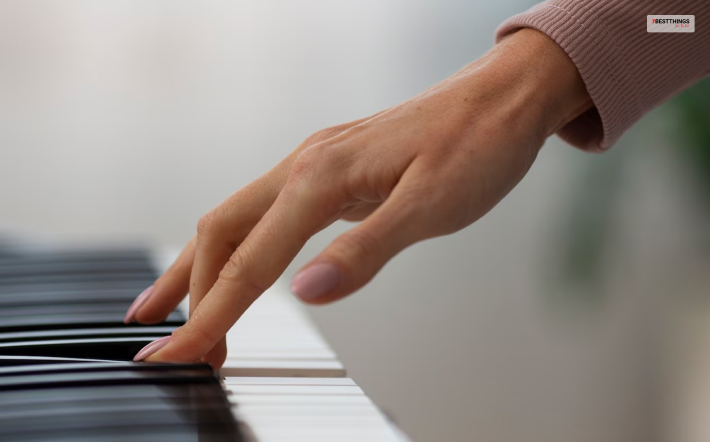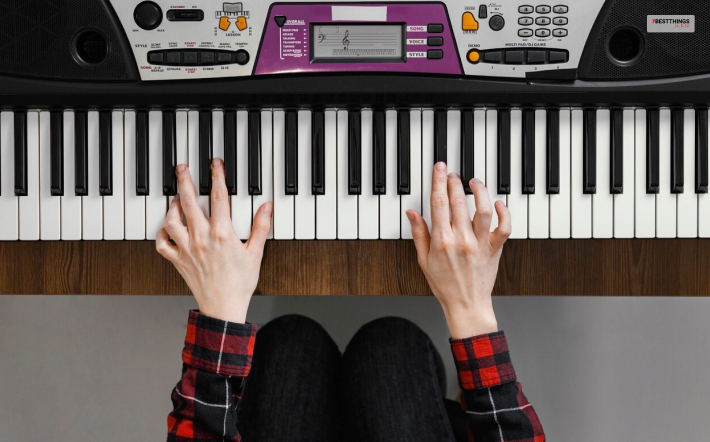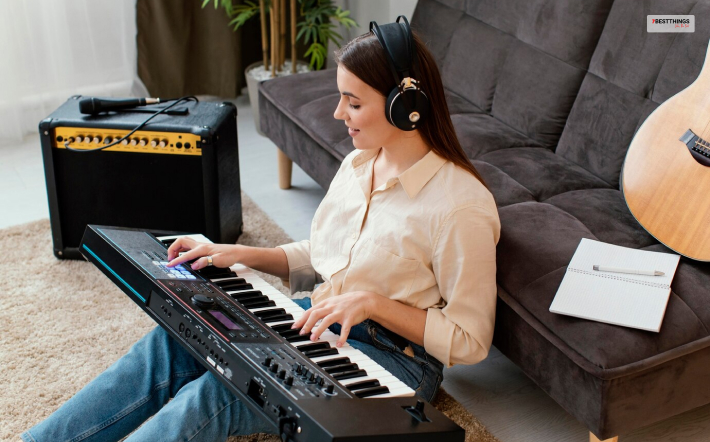When embarking on the purchasing journey of your first instrument, it’s crucial to know about a good model. Whether you’re a budding musician or a seasoned pianist looking to transition, choosing the right electric keyboard can significantly impact your musical journey.
This guide will explore five critical features that should guide your decision. This ensures you invest in a device that meets your needs and enhances your playing experience.
Contents
Look For These In Your First Electric Keyboard
So, without any further ado, let’s get into what you should look for in a new keyboard. This is what you should look for.
Touch Sensitivity: A Must for Expressive Playing

One of the most crucial aspects of any musical instrument is its ability to respond to the artist’s touch. For those stepping into the arena of digital pianos, touch sensitivity is a feature that has undeniable importance.
This functionality allows the volume and tone of the notes to change on the basis of how hard or soft you press the keys. Thus, closely mimicking the dynamics of an acoustic piano. It offers musicians the flexibility to express nuances in their music, making touch sensitivity a top priority for anyone serious about their craft.
This feature on an electric keyboard not only enhances the emotional expression in performances but also aids in developing a finer touch and control over dynamics, essential skills for any pianist.
Polyphony: The Key to Richer Sounds

Polyphony refers to the number of notes a digital piano can produce at once. As you progress in your musical journey, you’ll likely experiment with complex pieces that require multiple notes simultaneously.
A higher polyphony count in an electric keyboard ensures that your instrument can handle such compositions without dropping any notes, allowing for a fuller and more vibrant sound. Opting for a device with a polyphony of at least 64 notes is advisable to ensure nothing compromises your performance.
Furthermore, a generous polyphony count can be particularly beneficial when layering sounds or using the sustain pedal. This ensures that every note is audible clearly without unintended cut-offs.
A Variety of Sounds and Effects

The versatility of digital pianos lies in their ability to emulate different instruments and produce various sound effects. This feature opens up a world of creative possibilities. Thus, allowing you to experiment with sounds ranging from grand pianos to strings and beyond.
Additionally, effects like reverb and chorus can add depth and dimension to your music, providing an enriching playing experience. When selecting your instrument, consider the range and quality of sounds and effects it offers. This ensures that it aligns with your creative vision.
Built-in Learning Tools: Accelerate Your Growth

For beginners, instruments equipped with learning aids can be incredibly valuable. These tools can range from built-in metronomes to help with timing to light-up keys and lesson modes that guide you through songs and exercises. Some models even offer connectivity to apps and software, providing interactive lessons and tracking progress.
These features in an electric keyboard can significantly accelerate your learning curve. This eventually make them a worthwhile consideration for newcomers to the instrument. Not only do these aids make learning more accessible, but they also provide instant feedback. Both of them are crucial for correcting mistakes and improving technique efficiently.
Connectivity Options: For the Modern Musician

The ability to connect your instrument to other devices can greatly enhance your music-making experience. USB and MIDI connectivity allow you to interface with computers and recording equipment, opening up opportunities for composition, recording, and even performance enhancements.
Whether you’re looking to record your sessions, integrate with music production software, or simply use your instrument as a MIDI controller, ensuring it has the necessary connectivity options is essential for the modern musician.
Signs of A bad electric keyboard

Did you already buy one?
Still confused whether you will be returning it?
If you find these defects in your keyboard, it is time to exchange them immediately.
Here are some common signs of a bad electric keyboard:
1. Unresponsive or stuck keys
If you strike a key on the keyboard and the key does not respond, you might have to be careful. Further, if it does not release, it is an indication that something is wrong with the keyboard. This can be caused by either damaged or worn-out switches and electrical connections.
2. Erratic behavior
A bad keyboard can be identified by incorrect and difficult-to-read keyboard inputs or if the keyboard is acting erratically. This may be triggered by a number of reasons, for example, outdated connections, hardware breakdown, or software incompatibility.
3. Delayed or no response
If there is a delay in pressing a key and no inputting in your computer, or the system does not respond at all, it might be a faulty keyboard. This can happen due to damage to the parts, like worn-out components, loose connections, or the driver not being installed correctly.
4. Flickering lights
If the keyboard has backlit or indicator lights and these don’t turn on properly or flicker, it can be an indication of a faulty keyboard. This can be attributed to unsuccessful electrical connections or power supply.
5. Physical damage
This misfortune can occur if the keyboard is physically damaged (e.g., cracks or breakages), and the keys and other components can then fail to operate. Key replacement is the most appropriate for you to guarantee the best performance.
So, if you spot any of these symptoms, the matter should be dealt with immediately to prevent other severe complications. The type of intervention will depend on how critical the issue is. You will have to replace the keyboard or get it fixed by a technician.
To End The Discussion on the Electric Keyboard
In conclusion, when selecting your first electric keyboard, it’s essential to consider these five features. These ensure your instrument meets your needs and supports your musical journey.
Touch sensitivity, polyphony, a variety of sounds and effects, built-in learning tools, and connectivity options are all critical factors. These will influence your playing experience and growth as a musician.
Hopefully, we were able to give you a detailed overview. Make mindful choices when investing in any electronic device because you should always plan to use it for a long time!
More Resources:











